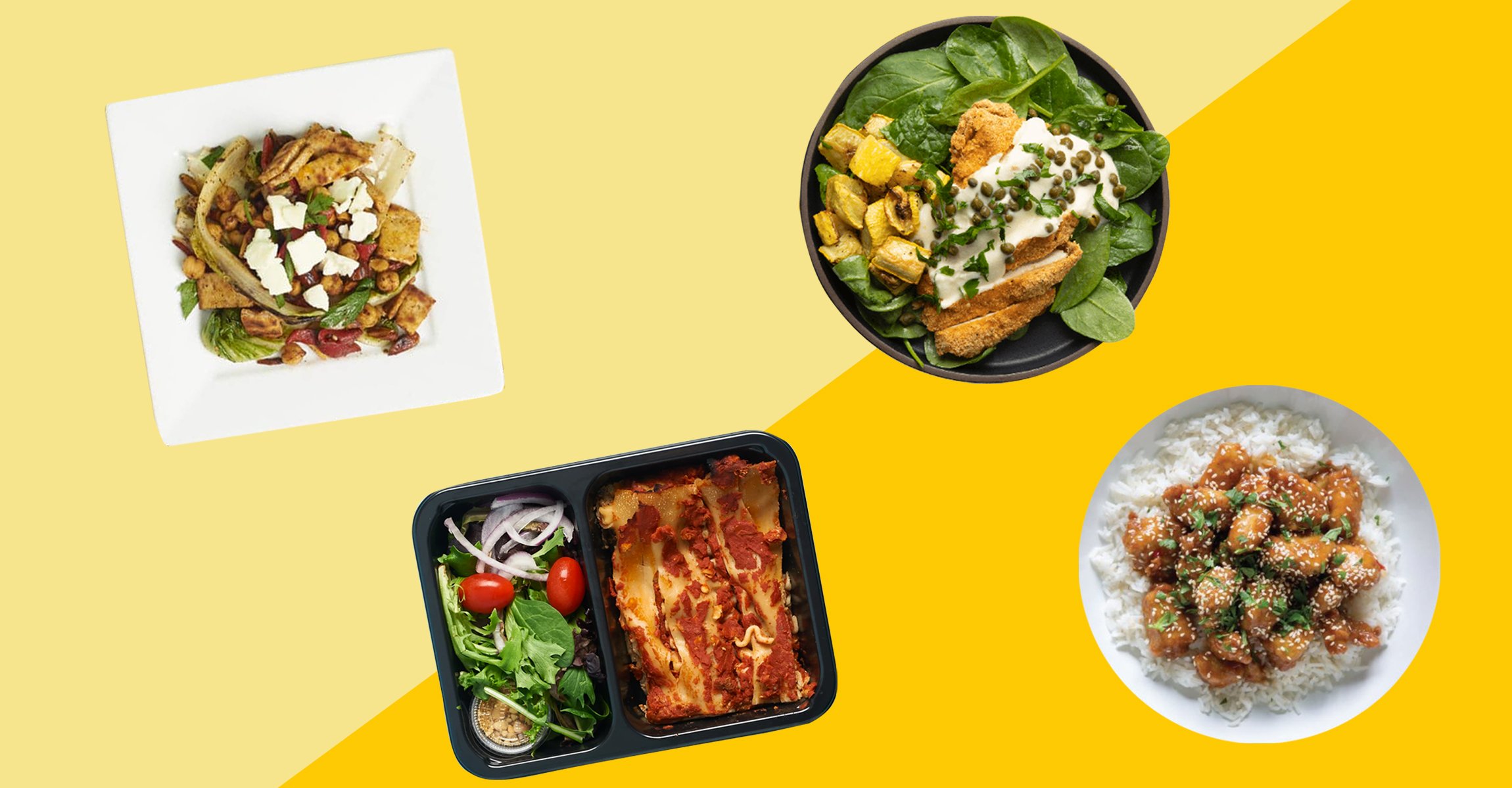Lunchdrop’s Revenue Model: Monetization Strategies For Meal Delivery Services facilitates innovative approaches to maximize revenue streams within the dynamic landscape of the meal delivery industry.
Editor’s Notes: Lunchdrop’s Revenue Model: Monetization Strategies For Meal Delivery Services have been meticulously published today to unravel a complex yet crucial topic for industry professionals. By closely examining the multifaceted strategies employed by Lunchdrop, readers will gain actionable insights that can help them optimize their own revenue models and stay competitive in this rapidly growing market.
The analysis, information, and carefully crafted guide we present on Lunchdrop’s Revenue Model: Monetization Strategies For Meal Delivery Services aim to empower target audience with the knowledge to make informed decisions.
Key Differences or Key Takeaways
Lunchdrop’s Revenue Model: Monetization Strategies For Meal Delivery Services stands out due to its:
FAQ
This FAQ section provides answers to frequently asked questions about Lunchdrop’s revenue model and the monetization strategies employed by meal delivery services.

11 Best Meal Delivery And Meal Kit Delivery Services Of, 45% OFF – Source einvoice.fpt.com.vn
Question 1: What are the primary revenue streams for Lunchdrop and similar meal delivery platforms?
Lunchdrop and other platforms generate revenue through multiple channels, including:
- Delivery Fees: Customers are charged a fee for each delivery, which varies based on factors such as distance and order size.
- Subscription Fees: Certain platforms offer subscription plans that provide members with discounted delivery fees and exclusive perks.
- Commission on Orders: Meal delivery services typically charge restaurants a commission on each order placed through their platform.
- Advertising Revenue: Some platforms generate revenue by selling advertising space to restaurants and other businesses within their app or website.
Question 2: How do meal delivery services determine the delivery fees charged to customers?
Delivery fees are influenced by various factors, such as:
- Distance: The distance between the restaurant and the customer’s delivery address is a major determinant of the delivery fee.
- Time of Day: Delivery fees may be higher during peak hours when demand is high.
- Order Size: Larger orders may incur higher delivery fees to cover the additional costs associated with transportation.
- Special Requests: Extra requests or modifications to orders may result in additional charges.
Question 3: What are the benefits of offering subscription plans to customers?
Subscription plans offer several advantages for both customers and meal delivery services:
- Discounted Delivery Fees: Subscribers typically enjoy reduced delivery fees on all orders, leading to cost savings.
- Exclusive Perks: Subscription plans often include additional perks, such as priority delivery, access to exclusive menu items, and loyalty rewards.
- Increased Customer Loyalty: Subscription plans encourage repeat purchases and foster customer loyalty over time.
- Predictable Revenue: For meal delivery services, subscription plans provide a steady stream of recurring revenue, increasing financial stability.
Question 4: How does the commission charged to restaurants impact their pricing and profitability?
The commission charged by meal delivery services can affect restaurants’ pricing and profitability in the following ways:
- Increased Costs: Restaurants may pass on the cost of the commission to customers by increasing their menu prices.
- Reduced Profit Margins: High commission rates can erode restaurant profit margins, especially for smaller establishments.
- Impact on Menu Design: Some restaurants may adjust their menu offerings to optimize profitability within the commission structure.
- Strategic Partnerships: Restaurants may seek strategic partnerships with meal delivery services to negotiate favorable commission rates.
Question 5: What are the ethical considerations surrounding advertising revenue on meal delivery platforms?
Meal delivery services have a responsibility to consider the ethical implications of advertising on their platforms:
- Transparency and Disclosure: Platforms should clearly disclose any paid advertising and ensure that it is distinguishable from genuine user reviews.
- Brand Alignment: Platforms should ensure that the advertised brands align with the values and reputation of the meal delivery service.
- Consumer Trust: Misleading or deceptive advertising can damage consumer trust in both the platform and the advertised brands.
- Regulatory Compliance: Platforms must comply with advertising regulations and industry guidelines to avoid legal and reputational risks.
Question 6: What future trends are expected to shape the revenue models of meal delivery services?
The meal delivery industry is constantly evolving, and several trends are expected to influence revenue models in the coming years:
- Subscription Proliferation: Subscription plans are anticipated to become even more prevalent as a means of increasing customer loyalty and generating recurring revenue.
- Dynamic Delivery Fees: Meal delivery services may implement dynamic pricing models that adjust delivery fees based on factors such as demand and weather conditions.
- Restaurant Partnerships: Meal delivery platforms may seek deeper partnerships with restaurants to offer exclusive menu items, discounted commissions, and joint marketing initiatives.
- Data Analytics: Advanced data analytics will play a crucial role in optimizing delivery routes, identifying customer preferences, and improving overall operational efficiency.
Understanding these revenue models and monetization strategies is essential for meal delivery services to succeed in the competitive food delivery market.
Transition to the next article section: Explore additional insights into the meal delivery industry by reading our comprehensive article on “The Evolution of Meal Delivery: From Brick-and-Mortar to On-Demand.”
Tips
The meal delivery industry is highly competitive, making it essential for providers to implement effective monetization strategies. Drawing inspiration from Lunchdrop’s Revenue Model: Monetization Strategies For Meal Delivery Services, here are some key tips to consider:
Tip 1: Offer a subscription-based model. This provides a recurring revenue stream and encourages customer loyalty. Consider tiered subscription plans to cater to different needs and budgets.
Tip 2: Implement delivery fees. Determine optimal fees based on factors like distance, delivery time, and peak hours. Consider offering free delivery for higher-value orders or as a promotional incentive.
Tip 3: Partner with local restaurants. This expands the menu options, reduces preparation costs, and creates a win-win situation for all parties involved.
Tip 4: Introduce upselling and cross-selling techniques. Encourage customers to add additional items, such as appetizers, desserts, or beverages, to their orders. This can significantly increase average order value.
Tip 5: Leverage data analytics. Track customer behavior, preferences, and order history to personalize marketing efforts, identify upselling opportunities, and optimize delivery routes.
These tips can help meal delivery services establish sustainable monetization models, increase revenue, and enhance customer satisfaction.
Lunchdrop’s Revenue Model: Monetization Strategies For Meal Delivery Services
Revenue models are essential for the success of any business, and meal delivery services are no exception. By implementing innovative and effective monetization strategies, these services can increase their revenue and profitability. Lunchdrop, a leading meal delivery service, offers valuable insights into various aspects of revenue generation in this industry.
- Delivery Fees: Charge customers a fee for delivering their orders.
- Subscription Plans: Offer subscription-based plans to provide regular meals at a discounted price.
- Partner Commissions: Generate revenue through partnerships with restaurants by earning a commission on each order.
- Advertising Revenue: Allow restaurants to purchase ad space on the delivery platform to reach new customers.
- Data Insights: Leverage data from customer orders to improve marketing campaigns and offer targeted promotions.
- Upselling and Cross-Selling: Encourage customers to spend more by offering add-ons, larger portions, or complementary items.
These key aspects highlight the diverse approaches to revenue generation employed by Lunchdrop and other meal delivery services. By balancing customer value with business profitability, these strategies enable companies to thrive in a competitive market.

Meal Delivery Services for Every Mom — in Boston and Beyond! – Source bostonmoms.com
Lunchdrop’s Revenue Model: Monetization Strategies For Meal Delivery Services
Lunchdrop, a leading meal delivery service, has developed innovative revenue models to drive growth and profitability. These strategies focus on maximizing revenue streams through delivery fees, subscription plans, commission on meal sales, and strategic partnerships. Understanding these strategies is crucial for meal delivery services to optimize their monetization efforts.
Save Time In The Kitchen With These Prepared Meal Delivery Services – Source www.msn.com
Delivery fees remain a primary revenue driver for Lunchdrop, ensuring compensation for the cost of delivering meals to customers. Subscription plans, such as Lunchdrop’s “Lunch Pass,” offer customers discounted meals and exclusive perks, generating recurring revenue. Commission on meal sales allows Lunchdrop to earn a percentage on each meal ordered through its platform, incentivizing restaurants to join and expand their reach.
Strategic partnerships play a significant role in Lunchdrop’s revenue model. By partnering with local restaurants and food businesses, Lunchdrop can offer a wider selection of meals, catering to diverse customer preferences. These partnerships often involve revenue-sharing agreements that generate additional income streams.
By leveraging these revenue models, Lunchdrop has successfully monetized its meal delivery services, creating a sustainable business model. These strategies provide valuable insights for other meal delivery services seeking to optimize their revenue generation and drive growth.
